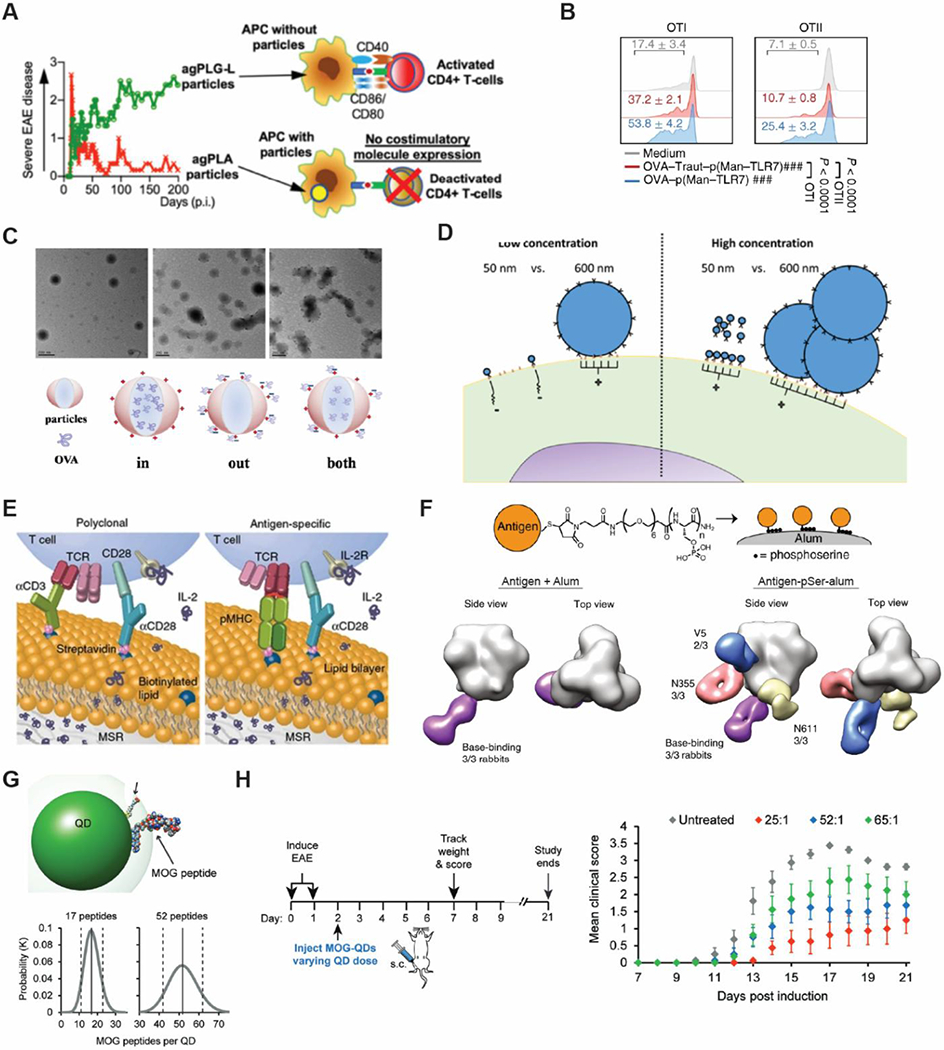Figure 5.

Biomaterials modulate the context of antigen delivery to regulate immunity for both immune activation and to promote tolerance. A) NP-cell interactions depend on the type of polymer used. Association of PLA particles with APC inhibit expression of costimulatory molecules to induce tolerance, resulting in lower disease severity. Reproduced with permission.[118] Copyright 2019, Elsevier. B) Reversible chemistry of OVA-p(Man-TLR7) linker allows for release of unmodified antigen, allowing for improved antigen presentation and downstream proliferation of both CD4+ and CD8+ T cells. Reproduced with permission.[120] Copyright 2019, Nature Publishing. C) TEM and schematic illustrations of different deliery methods of antigen that evoke different intracellular processing mechanisms by APCs. NPs with antigen presented on the surface promote antigen presentation and activation of CD4+ while NPs that encapsulate antigen, promote CD8+ T cell responses. Incorporation of antigen at both locales promotes expansion of both CD4+ and CD8+ T cells. Reproduced with permission.[124] Copyright 2016, Elsevier. D) Antigen presentation density plays an important role in activating T cells. Small aAPCs poorly expand T cells at lower concentrations compared to larger antigen coated particles. When the concentration is raised to improve clustered binding of antigen coated NPs, small aAPCs can expand T cells as well as larger aAPCs. Reproduced with permission.[126] Copyright 2017, American Chemical Society. E) Presentation of stimulatory T cell cues (e.g. anti-CD3, anti-CD28) on lipid bilayers mimcs the dynamic process of surface cue presentation, allowing for robust expansion of T cells even at lower presentation density. Reproduced with permission.[127] Copyright 2018, Nature Publishing. F) Antigen conjugated to alum using a linker composed of repeating phosphoserine units offers conformational control. Single particle electron microscopy analysis of antibodies in treated rabbits revealed that the ability to orient antigen display allowed for targetting of a larger repetoire of antigen epitopes. Reproduced with permission.[134] Copyright 2020, Nature Publishing. G) Antigen density also plays an important role in vaccines and immunotherapies for autoimmune diseases. Quantum dots enable the tuning of antigen display density. H) At constant overall antigen dose, treatment with more particles displaying antigen at a lower density can more effectively reduce clinical scores in a mouse model of multiple sclerosis (EAE). Reproduced according to the terms of the Creative Commons Attribution 4.0 International License.[144] Copyright 2017, Wiley-VCH.
